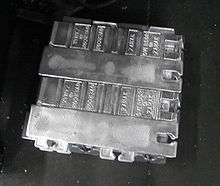Kegan
Member
Hi everyone
I am new to casting but have been collecting materials to melt for a long time. I have only just recently gotten a house and a workshop and am planning my first foundry/furnace build in the next few month.
I have collected cast aluminium and cast zinc and tin items. Ive been learning to tell the difference lately, density seems to be a tell tale indicator. Items like belt guards can be made from aluminium quite easily and the material seems to suit such applications. But items like the base of machines, lathe beds and such call for a heavier material like cast iron. Take the Quorn tool cutter for example.
So has anyone used tin or zinc or zamak or alumimium-bronze to make parts for projects like the Quorn etc? I noticed my Myford ML7 Apron is made from a metal that is not aluminium or cast iron, correct me if I am wrong.
If this topic has been covered sufficiently please accept my apologies and point me in the right direction. If you have experience with any of this please share. I like to experiment and my budget is tight so I like out the box ideas. Simply buying ingots of the right type of material is not an option for me at this time.
Thank you for your time
Kegan
I am new to casting but have been collecting materials to melt for a long time. I have only just recently gotten a house and a workshop and am planning my first foundry/furnace build in the next few month.
I have collected cast aluminium and cast zinc and tin items. Ive been learning to tell the difference lately, density seems to be a tell tale indicator. Items like belt guards can be made from aluminium quite easily and the material seems to suit such applications. But items like the base of machines, lathe beds and such call for a heavier material like cast iron. Take the Quorn tool cutter for example.
So has anyone used tin or zinc or zamak or alumimium-bronze to make parts for projects like the Quorn etc? I noticed my Myford ML7 Apron is made from a metal that is not aluminium or cast iron, correct me if I am wrong.
If this topic has been covered sufficiently please accept my apologies and point me in the right direction. If you have experience with any of this please share. I like to experiment and my budget is tight so I like out the box ideas. Simply buying ingots of the right type of material is not an option for me at this time.
Thank you for your time
Kegan






